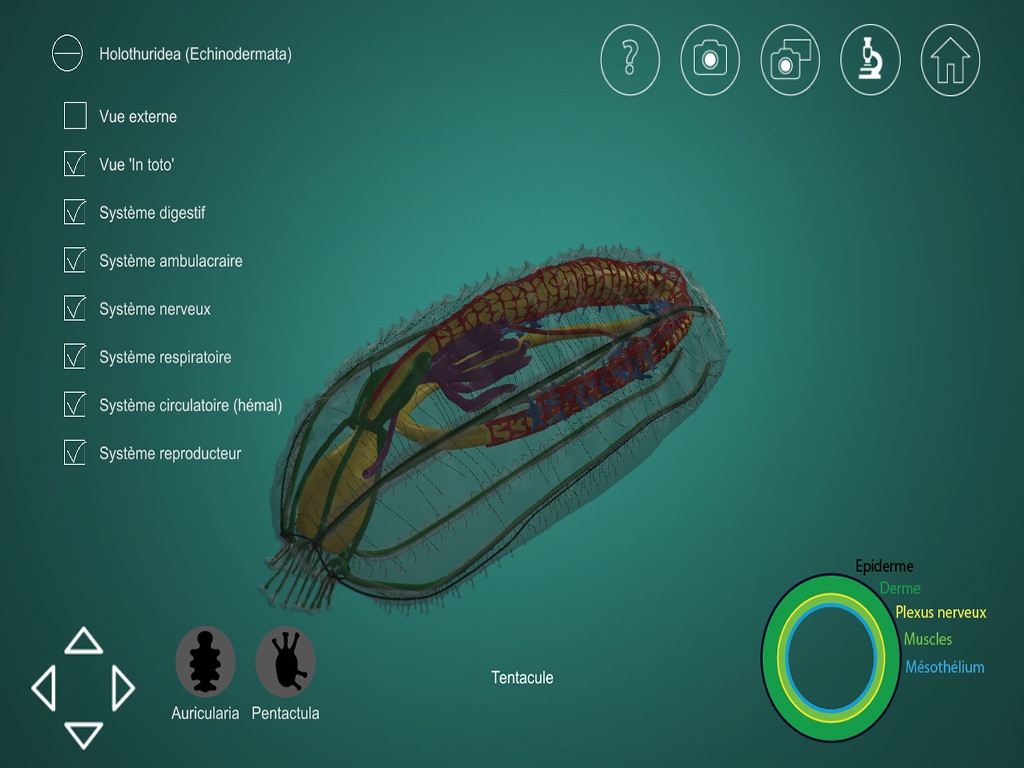
We live in a three-dimensional world and in this, like all living organisms, we have a length, a width and a thickness. The study of animals, The Zoology, involves the understanding of body plans: without describing the structure of an organ or an organic system, the functioning of it is incomprehensible. If we live well in a three-dimensional world, the explanatory means at our disposal still pass most of the time through two-dimensional supports: the blackboard of the professors, the data projector screen, the drawings or the photographs we have give us 2D images of objects or structures that we describe and analyze.
MetaMorphos (Metazoan Morphology) is a program that illustrates metazoan structure plans by high quality 3D reconstructions. It is aimed at people who want to understand animal architecture whether naturalist amateurs, professional zoologists, students or professors in biology. MetaMorphos 2.15 is the third version of the program and comprises fifteen organisms: an anthozoan (Cnidaria), a comb jelly (Ctenophora), a flatworm (Platyhelminthes), a polychaete (Annelida), a gastropod (Mollusca), a nematod (Nematoda), a sea cucumber (Echinodermata), an ascidian (Urochordata), etc.
The organisms presented in MetaMorphos are avatars, that is to say 3D reconstructions of typical organisms regrouping the major characteristics of high-ranking taxa in the Linnean hierarchy, usually classes. MetaMorphos allows to analyze the external morphology of the avatars as well as its systemic organization. The visualized organic systems are the digestive, excretory, nervous, reproductive, circulatory, and respiratory systems with some other unique systems observed in certain taxa as well (e.g., the ambulacral system of echinoderms). An organic system can be visualized alone or with other systems, either in toto or without representation of the translucent body of the animal. A cursor is used to identify the systemic parts. The avatar can be oriented in all the dimensions of the space and a function "zoom" makes it possible to magnify the part of the body in analysis.
A Body Plan is a modeled morphological organization that characterizes a set of species that are part of a high-ranking taxa, usually a phylum or a class. The term "Baüplan" was introduced by the German embryologist Henry Woodger (1945), which he defined as the structure plan common to the species of a monophyletic group. It was mainly at Haeckel (1863, 1866, 1868, 1872, 1874, 1875) to whom we owe the sketch, still strongly present today, of the taxonomic division of metazoans into classes and phyla. In this Haeckel is also the first to divide the set of metazoans into groups comprising species with a similar structure of the body.
Realisation:
Igor Eeckhaut (zoologis)
Nathan Puozzo (graphic designer)
After original idea of Igor Eeckhaut.



